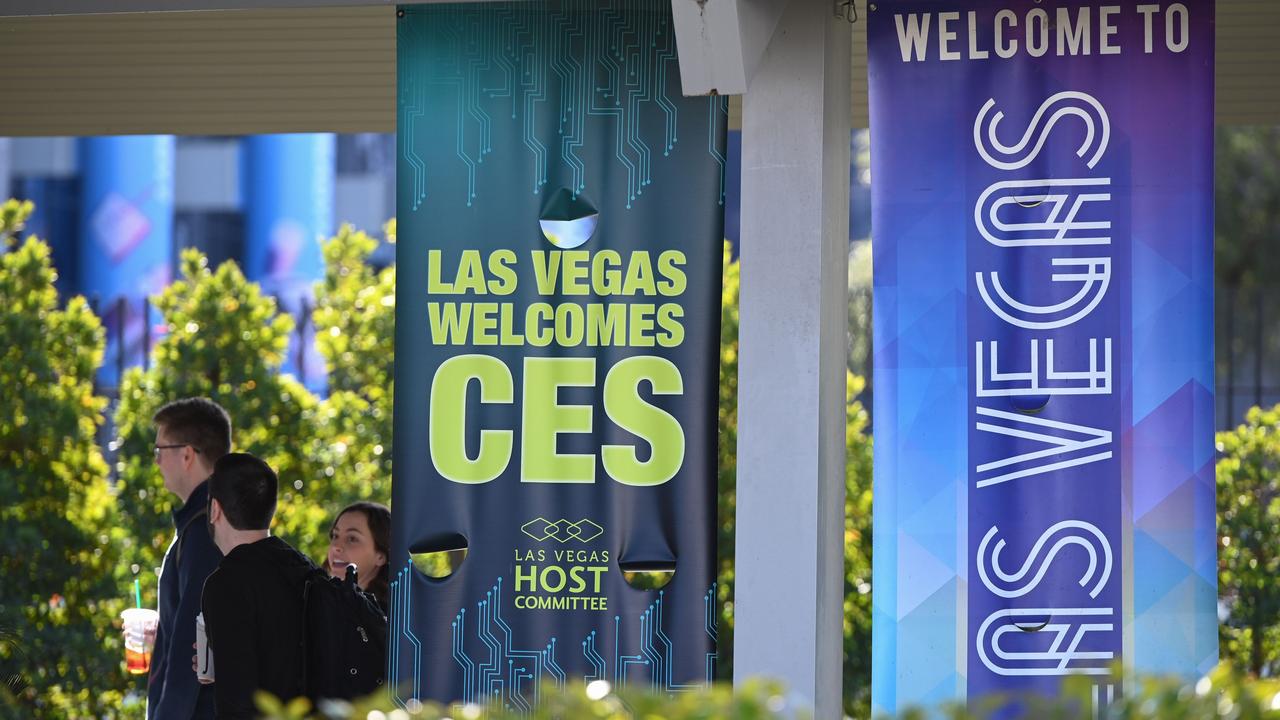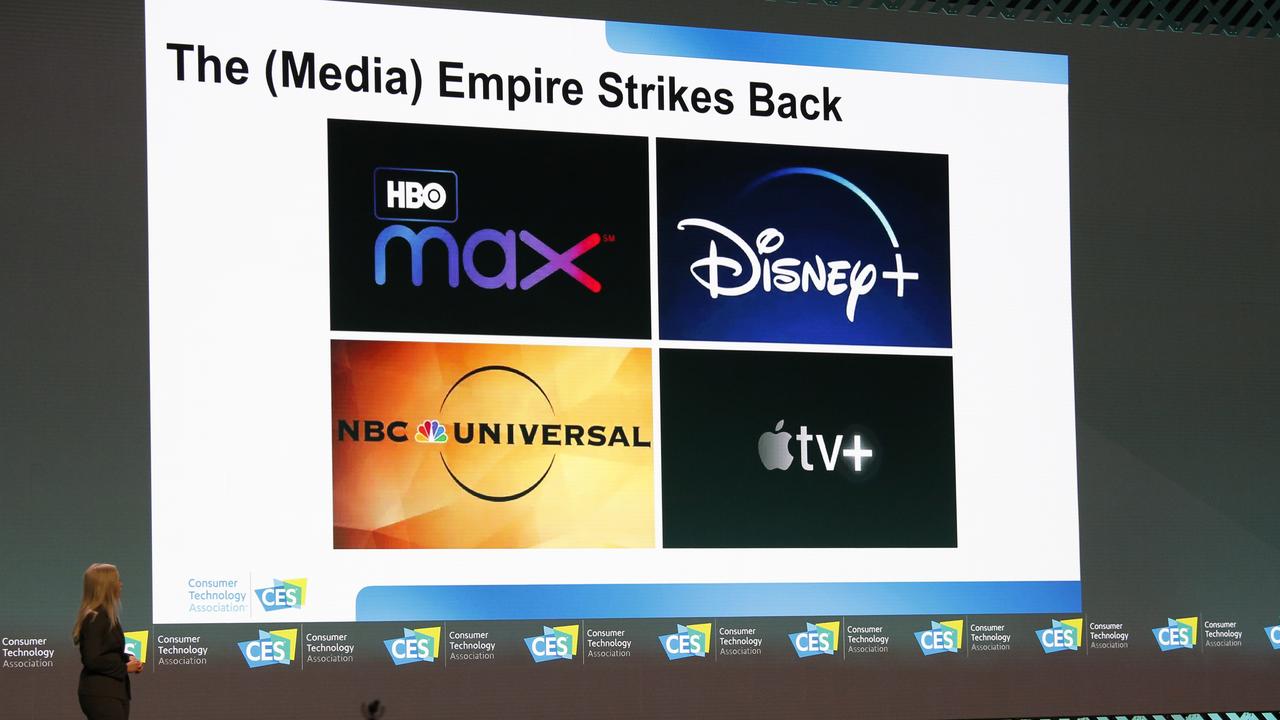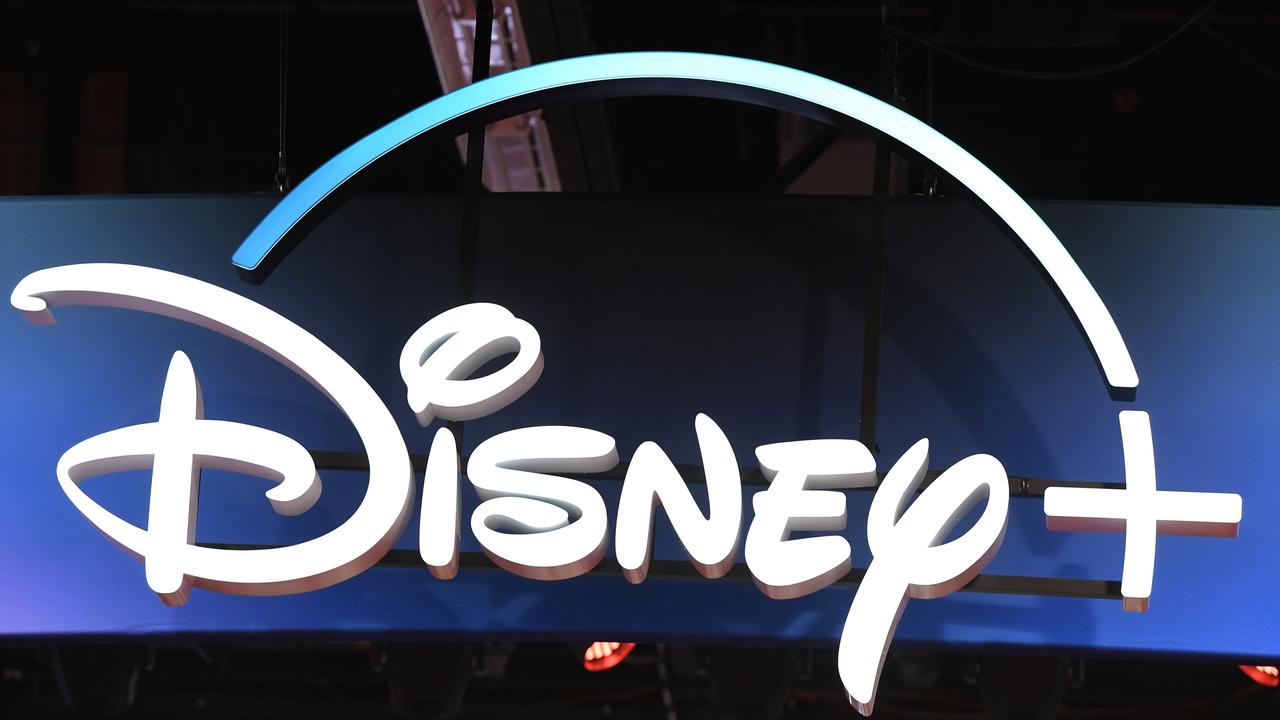What to expect from the CES gadget show
The future of television is set to be front and centre at one of the largest technology trade shows in the world this week.

One of the world’s largest technology trade shows officially kicks off to the public in Las Vegas on Wednesday, and television is set to be front and centre at this year’s event.
More than 170,000 people are expected to attend the Consumer Electronics Show, with 4500 companies exhibiting across a sprawling set of hotels and convention centres, equivalent to more than 50 football fields.
Speakers throughout the week include US President Donald Trump’s daughter and adviser Ivanka, and Samsung’s head of consumer electronics Hyunsuk Kim. Executives from TV networks NBC and CBS, as well as those from upstart video services like mobile-focused Quibi and free streamer Tubi, will present keynote addresses.
RELATED: Surprising new threat facing Google

HOW TO WATCH KEYNOTE ADDRESSES
While most brands exhibiting at CES are only giving press access to their 2020 conferences, AMD, Sony and Samsung are offering live streams that the public can watch and follow along with.
Here’s how to tune into their big announcements:
• AMD: AMD’s press conference takes place at 9am AEDT on Tuesday, where the company plans to show off how it will make 2020 “an unforgettable year for gamers, creators and mobile PC users”.
You can sign up to access a live stream of their CES keynote on the company’s dedicated CES website.
• Sony: Fans can expect a teaser for the PlayStation 5, a slew of new televisions, and potentially new headphones and camera equipment at Sony’s keynote at 12pm AEDT on Tuesday.
The company will be live-streaming the whole thing on its website.
• Samsung: Samsung’s press conference will kick off shortly after Sony’s, at 1:30pm AEDT on Tuesday. The company will stream it on its dedicated website, as well as on Facebook.
Their 2020 announcements are expected to be primarily focused on new televisions, specifically new 8k models, with plans to “showcase innovative ways to enrich people’s lives through its interactive and intelligent technology in the Age of Experience”, according to a statement.
WHAT TO EXPECT FROM CES 2020
The topic front of mind will no doubt be the streaming wars – not to mention mounting costs for consumers who want access to everything – as giants NBC Universal and Warner Media prepare to join the clash with Netflix later this year.
Some companies also promise a big new push into “bite-sized” video designed to draw mobile viewers from YouTube, despite the fact that a similar effort several years ago floundered.
Beyond streaming, expect to see artificial intelligence-infused home appliances, security cameras and cars, new gadgets that show what faster 5G cellular service can offer and, as always, the newest in robots and souped-up TVs.
RELATED: The biggest tech fail of the decade

As technology increasingly infuses our lives, more traditional companies are showing up for the Las Vegas event. There’s a new travel section, for example, with Delta Air Lines its largest exhibitor.
CES has hosted previous attempts to set out a road map for TV.
At the 2015 show, satellite TV company Dish announced a cheaper, cable-like package of TV channels delivered over the internet and intended for cord-cutters. Offerings from Sony, DirecTV, Google, Hulu and others soon joined Dish’s Sling TV.
But five years later, these online alternatives have been struggling, raising prices and in the case of Sony’s PlayStation Vue, shutting down altogether.
So it’s on to Plan B: Owners of television channels and producers of their shows are selling Netflix-like subscription services directly to consumers.
Disney Plus launched in November, while Warner Media’s HBO Max and NBC Universal’s Peacock are coming in a few months.
RELATED: Everything new to streaming this month

If people would rather pay for subscriptions such as Netflix instead of traditional television channels through cable packages, Disney and other media companies figure they might as well try to get some of that money directly.
But they face competition from tech companies also seeking to replicate and encroach on Netflix’s success.
Apple launched its own streaming service in November, while Quibi promises phone-friendly viewing, with former Disney studios chief Jeffrey Katzenberg behind the effort.
Katzenberg and Quibi CEO Meg Whitman, the former CEO of Hewlett Packard Enterprise, will use a Wednesday keynote to provide details on Quibi, which is investing $1 billion on new shows with backing from all the major movie studios.
Short for “quick bites,” the mobile-first service is designed to be watched for a just a few minutes at a time. Video programs are broken into 10 minute “chapters” – about the same length as broadcast TV segments between commercial breaks – intended for on-the-go viewers with limited attention spans.
“We want to take a phone, a device that was not actually designed to watch video on, and make it into a great watching device,” Whitman said in an interview.
Meanwhile, Netflix, Amazon and Hulu have all been experimenting with short-form offerings, many of them in comedy.

Quibi will also preview some of its 20 new shows, including Chrissy’s Court, a Judge Judy-style show from Chrissy Teigen.
It is also debuting with movies and other content like news and weather.
Quibi launches April 6 for $5 a month with ads, and $8 without.
NBC executives won’t offer more details on its upcoming Peacock service until January 16. Instead, they will trot out America’s Got Talent host Terry Crews, This is Us star Mandy Moore and other NBC luminaries at CES to talk more generally about the future of TV and entertainment.
“Audiences don’t differentiate by screen anymore,” said Linda Yaccarino, chairman of advertising and partnerships at NBCUniversal.
“They want and expect an on-demand, always-on world.”
As television companies experiment with making more shows available in more ways, they’ll also accumulate data on viewing habits far beyond what they got with over-the-air and cable channels.
That will help them target advertising to viewers’ interests and make recommendations for other shows to keep viewers glued.
Companies will also test different pricing models in 2020, as they try to figure out how and how much consumers will be willing to pay.
Is there a limit to how many services consumers will pay for?
Will they adapt to separate prices with and without ads? Or will they flock to free services like Tubi, even if they lack original movies and TV shows?
Kevin Westcott, who heads Deloitte’s U.S. telecommunication, media and entertainment consulting business, notes that consumers are getting more choices and shows than ever, just as new technologies such as high-quality TV displays and faster 5G cellular networks come along.
The downside?
“Too much choice and too much technological change” at once, he said, which could make viewers wary of new options, he said.
– With AP



